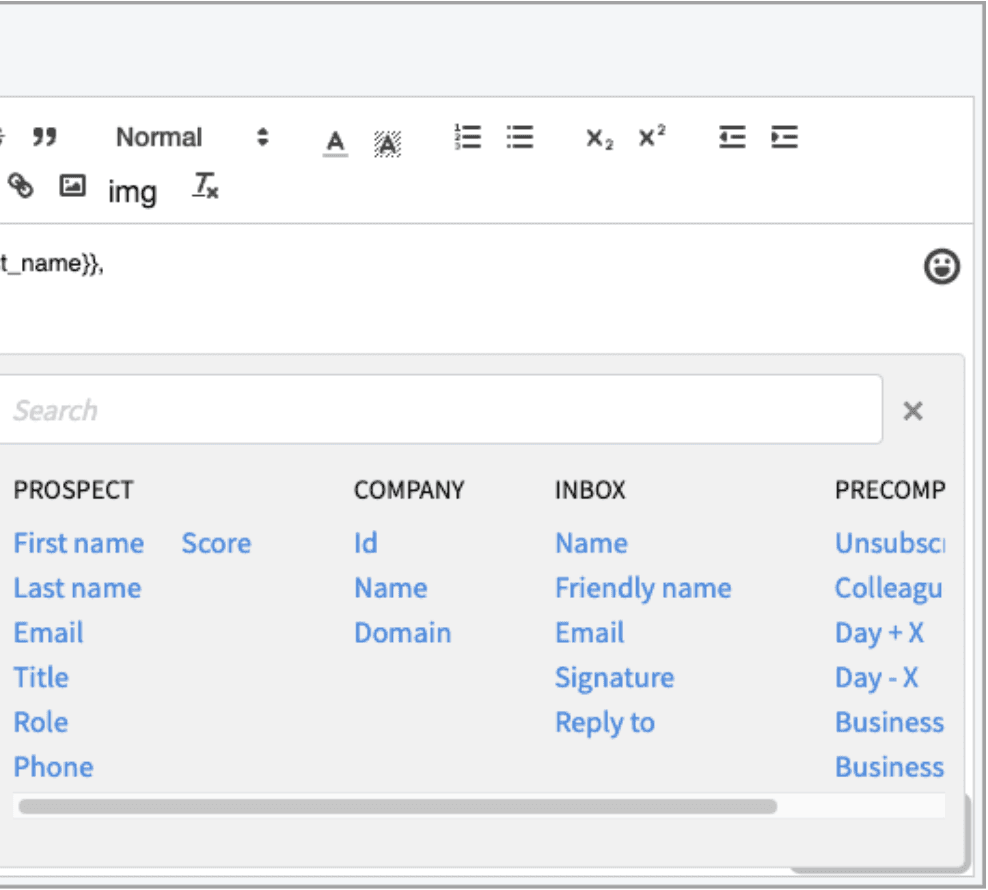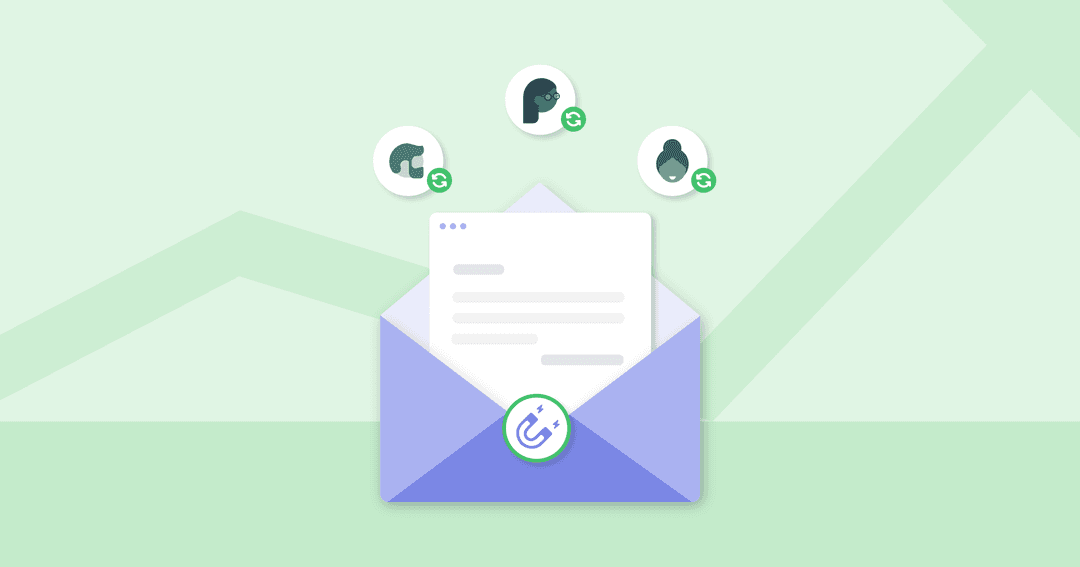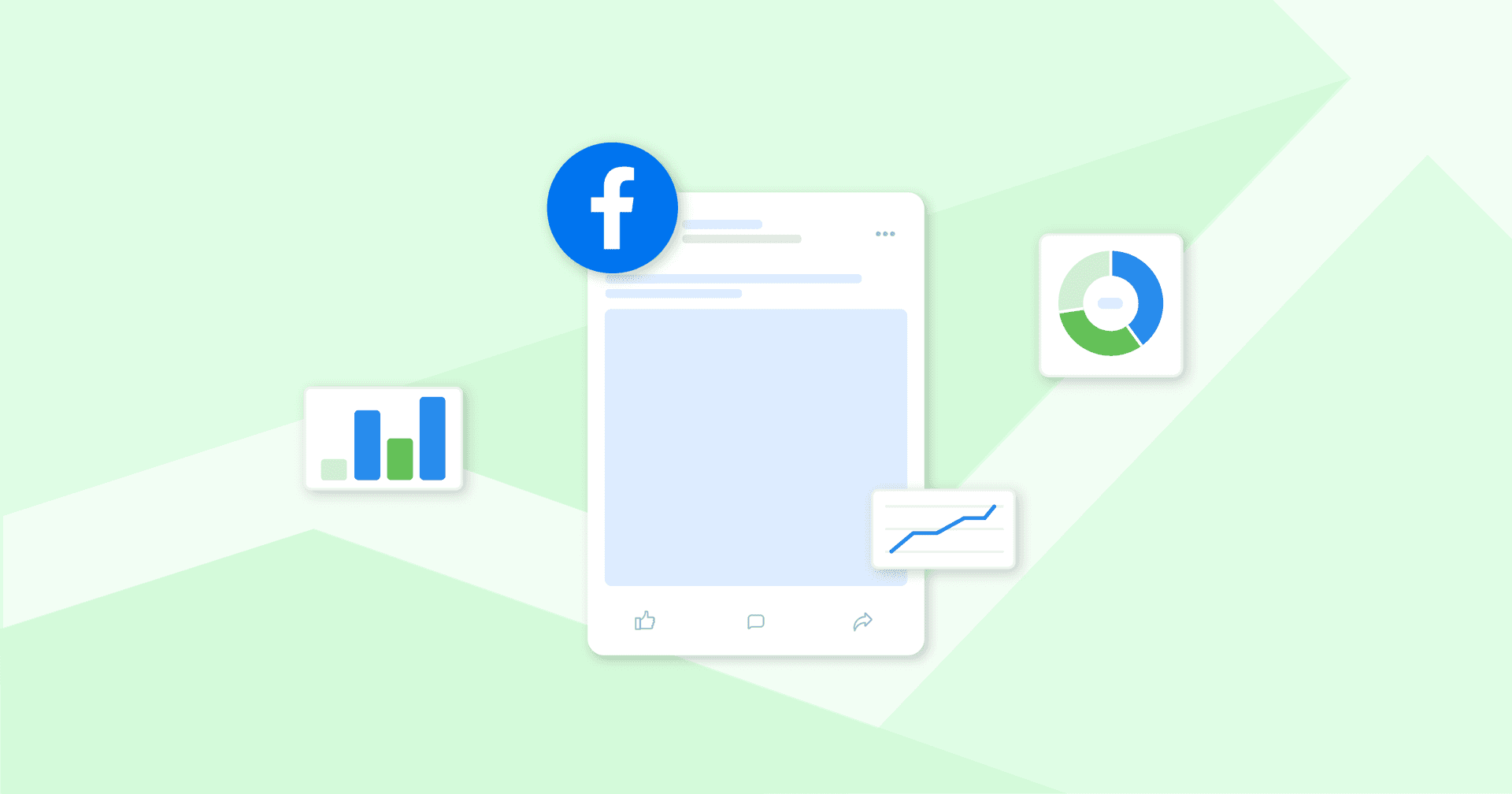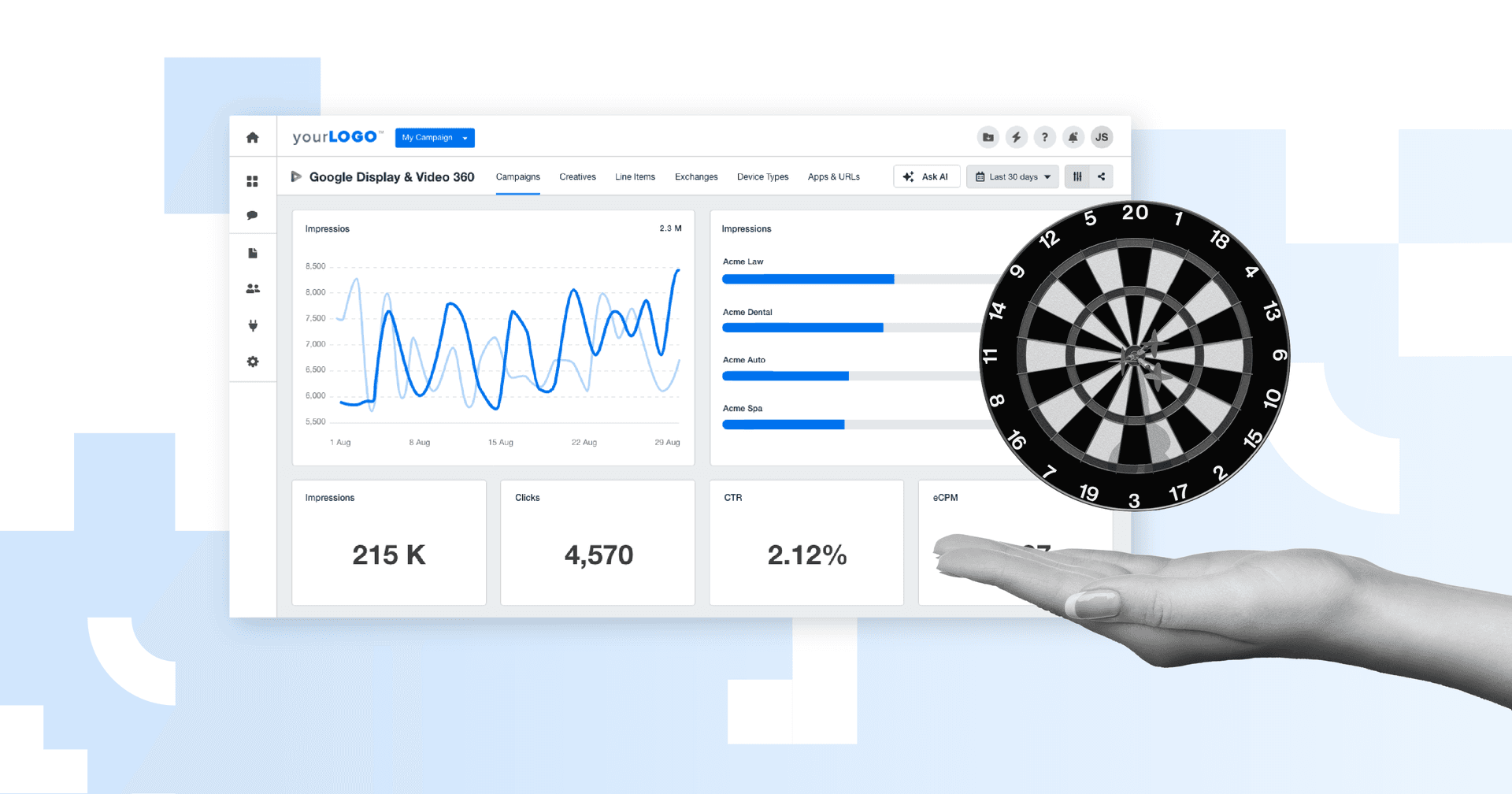Table of Contents
QUICK SUMMARY:
Win-back emails are as a strategic method for marketing agencies to re-engage their former clients, offering a chance to recover lost relationships and revenue. These emails aim to reignite interest in your services, possibly including incentives like discount codes.
Every agency loses clients at some point. But the potential to win them back in through well-crafted win-back campaigns is a valuable opportunity. In this article, we’ll share essential tips and tricks to reactivate canceled clients effectively, rebuild relationships, foster client loyalty and stay top-of-mind.
Let's explore the key strategies for successful win-back campaigns.
Understanding the Power of Win-Back Emails for Agencies
Losing a client can be discouraging, but don't despair! Client loss isn't always permanent. In the dynamic marketing agency world, opportunities for a comeback can swiftly emerge.
Perhaps budget restrictions have been limited. Or maybe the new agency they thought would do a better job than your team didn’t deliver on their promises.
By staying proactive and nurturing relationships with former clients, agencies position themselves for value-based reunions in the future. Persistence, consistent communication, and a laser focus on delivering value are the keys to regaining trust and rebuilding thriving relationships.
That’s why a strategic way to reconnect with lapsed inactive customers who have stopped using your agency’s services is essential. When correctly implemented, a win-back campaign is a powerful tool to nurture your past clients and leave them with the best possible impression of your agency.
Even if they don’t consider re-activating their contract with you, including a request for reviews and new client referrals lead to conversations with brand new leads and get more clients.
How Many Win-Back Emails Is Too Few (And Too Many)?
There’s no single correct number of emails to include in a win-back email campaign. However, if you’re only sending one, you’re leaving revenue on the table.
The team at QuickMail did a study on 65+ million emails sent and found that 55% of replies to email campaigns come from follow-up steps.
It just makes sense. Just like when you’re bringing new leads into your sales pipeline, the lead nurturing process for canceled clients requires patience. A win-back email sequence should include several emails at varying timeframes to remind your recipients of the benefits of your agency services.
At the same time, make sure to put a realistic limit on the number of emails in your customer win-back campaign. If your agency sends 10+ follow-up emails and your lapsed customers still haven’t engaged or replied, there’s a strong chance they’re not interested in coming back. At that point, you should stop sending your win-back email campaign to them.
Determining the Right Timing for Agency Win-Back Emails
Clients can cancel or churn on an agency for many reasons. Some lost customers involuntarily churn due to payment issues, others may have a change of company leadership, and in some cases, it could be that they’re not currently seeing the value of your services.
In nearly all cases, you’ll want one email sent shortly after a client cancels–especially as you’d like to conduct an exit interview to see what went wrong and how to improve things–or learn for next time.
If they’re happy to have the exit interview, tailor the next email you send them based on specific points in your conversation. Some agencies prefer to send a manual customer win-back email to ensure it matches the tone of your call with them.
If a client doesn’t want to have an exit interview, send them a win-back email campaign focused on the core reason they canceled their contract. Use this to segment your win-back emails accordingly.
Here are some examples of win-back emails based on the situation:
Canceling due to price objections? Send a win-back email campaign focused on the value-add your service offers in the long run.
An lost customer chooses an alternative agency to work with? Send a re-activation sequence that focuses on the unique expertise that your team has and offers to ease the transition process for them.
If a client asks to terminate your services due to internal company changes, send them a win-back email letting them know you’re sorry to see them go, and then follow up with resources to help them see success beyond using your agency.
Here are some more win-back campaigns tailored to the top churn reasons faced by today's marketing agencies:
Churn Reason | Win-back Email Campaign Idea |
|---|---|
Inadequate Results Reporting | Share a comprehensive case study showcasing how you're using your new AgencyAnalytics client reporting system. |
Lack of Communication | Initiate a campaign that emphasizes improved client-agency dialogue, including emails that highlight your new client communication charter, integrated client messaging, a testimonial from a satisfied client about your responsiveness, and a personalized invitation for a catch-up call. |
Missed Deadlines | Start a campaign that underlines your new project management strategies. Highlight newly adopted task management tools or processes in your emails, followed by an invitation to a webinar showcasing your new project delivery methods. |
Unmet Performance Expectations | Craft a series of emails demonstrating your agency's recent wins, new hires or capabilities, and performance data that exceed industry standards. For example, end the series with an invitation for a customized website performance audit. |
Each campaign idea is designed to address the specific reason for churn, showcasing the agency's willingness to learn from past mistakes and take proactive steps toward improvement.
Clearly communicate your agency’s success in driving ROI with a customizable Email Marketing Report Template. Try AgencyAnalytics free for 14 days!
Agencies Need a Scalable Win-Back Email Process In Place
To make this all scalable, agencies must create triggered email sequences using a lead management tool or CRM software. This way, as soon as it picks up that a contact has canceled or churned based on their contract status, they’ll automatically receive an email to win them back.
With a clear strategy to automatically segment and then send win-back emails, your agency continues the conversation with a lost client and builds on the relationship.
Next, you’ll learn our most effective tactics for creating win-back emails that get results.
6 Tactics for Agency Win-Back Email Campaigns That Convert
1. Use Deep Personalization to Build Trust
The first step to any successful win-back email is personalization.
Data shows that 89% of marketers see a positive ROI when using personalization in their campaigns, and this is particularly important for high-trust businesses like marketing agencies. Your former clients want to know that you value the relationship as much as they did.
As soon as a client cancels their plan, we recommend sending a genuine, personal email from the client’s account manager or your agency’s CEO. Reference interactions you’ve had with that specific client prove that the client-agency relationship mattered to you.
Although this level of personalization is difficult to automate, it matters in this first email, particularly because most agencies will use it to ask if the recipient is open to scheduling an exit interview to discuss the reasons for leaving and share feedback.
Because this is a high-commitment ask and take 30-60 minutes of your previous client’s time, the personalization will help them say “Yes.”
When it comes to emails later in the win-back email funnel, consider automating the process–but make sure to continue with the personalization.
From the subject line to the actual email, add personalization to every automated win-back email you send, use mail merge tools like QuickMail.
As you’re writing your email templates, add attributes into them, such as {{prospect.first_name}} or {{company.name}}.

These will automatically be replaced using the personal information of each client from your email list.
Some ideas for personalized snippets to add to your emails include:
First names
Company names
Job titles
The name of the contract or agency plan they were using
Custom notes related to pricing or value propositions you know each client cares about
2. Test Different Value Propositions and Offers
Many agencies have clients who come to them for one specific thing. For example, if you run a full-service paid advertising agency, you’ll have clients who arrive wanting you to run Google Ads for their business.
Once they’ve seen good results or decide they want to focus on a new channel, there’s a risk that they stop using your service simply because they didn't realize you had more to offer.
Your win-back email sequences are the perfect opportunity to showcase other complementary offerings that your agency can help your previous clients with.
For example, suppose you learn in your exit interview that they decided to cancel because you didn’t offer the services covering the new advertising channels they wanted to test. In that case, send a case study of a recent win with those new channels–whether it be Facebook or TikTok ads–proving your expertise.
Agency Tip: Focus on one new value proposition per email.
If you send a template that mentions every single one of your agency's offerings, there will be too many choices. Focus on one value proposition in every reminder email tailored to the specific solutions your canceled clients are interested in. This way, your recipient clearly understands why you’re reaching out and will be more likely to make a decision.
3. Share Recent Wins to Build Trust
In most cases, your past clients know your agency gets results–after all, they wouldn’t have worked with you otherwise. However, there are multiple decision-makers in every company, and the person who canceled their contract with your agency wasn’t necessarily the one who worked directly with you.
Agency Tip: If your client canceled because of campaign performance issues, highlighting wins your team achieved with other clients may bring them back for another try.
Use your win-back emails to share your other client wins, case studies, and reviews to showcase your expertise. These include teardowns of campaigns you’ve managed, testimonial videos, or even links to your agency on review sites like Clutch.
Positive reviews in marketing materials increase conversion rates by 140%, so it’s an effective way to win back your clients who are tempted to come back and use your services but haven’t made a final decision.
Where possible, create assets like PDFs that make it easy for recipients to share your materials with other decision-makers. Your recipients will see these and want to replicate the success of your case studies, opening up the door for a conversation about renewing their contract.

The best way to win-back clients is to never lose them. Create custom client-facing dashboards to share with your clients’ key stakeholders. Share all their key marketing metrics at a glance, and showcase the value your agency brings to their business. Try AgencyAnalytics free for 14 days.
4. Ask for Honest Feedback
When clients fire your agency, it’s rarely personal. It’s often due to a change in their business, and they’ll be happy to take a few minutes out of their day to provide advice.
Asking your past clients for honest feedback is an excellent way to generate engagement and learn from them.
There are two main reasons to ask for feedback in your win-back emails:
You get genuinely important feedback to improve your agency
It gives you a way to restart a conversation with past clients
Once the client replies, you can book a call with them to discuss their feedback and from there, offer opportunities to improve on their feedback.
If they don’t want to have a call:
Gather their feedback over email
Send them a link to any helpful resources if their feedback flags any issues
Let them know your agency is there to help in the future if they need it
You don’t need to use any fancy templates when sending this type of email. It will work best if it looks like it comes from an individual, such as the CEO of your agency.
Here’s an example of an email template:

When your previous clients receive your win-back email, they’ll be happy to respond as they know you’re reaching out on a personal level.
5. Keep Your Call-to-Action Simple
The best marketing emails have all one thing in common: they make it simple for the recipient to take action.
In each of your win-back emails, always keep your call-to-action (CTA) focused on one thing, whether that’s reading a case study or watching a recent video.
Here are some examples of actions to include in a winback campaign:
Scheduling an exit interview with your team
Going to an external website to leave a review of your agency
Replying to your email or filling out a feedback survey to provide input on your services
Reading a recent post that provides industry insights, trends, or predictions to position your agency as a trusted source of knowledge and expertise
Attending an exclusive event or webinar where inactive customers can gain some valuable expertise on a particular subject
Checking out a new service or feature that your agency now offers
Watching, listening to, or reading testimonials or success stories from clients who have benefited from your agency's services
Scheduling a one-on-one consultation to discuss the possibility of working together again
Activating an exclusive coupon code which can help recover customers who may have churned because of pricing
If your template has multiple questions and different CTAs, your recipient won’t know what to do first. The result will be that they don’t take action at all.
Test multiple CTAs across different emails in your win-back sequence. Take the following win-back email examples:
Email 1: Use a clear call to action asking to book a meeting
Email 2: Ask for simple feedback, such as finding out what the core reason for canceling was or what they found most valuable at your agency
Email 3: See if they would be open to leaving your agency a review or testimonial to use in your marketing materials
Email 4: Provide a free resource, such as a training webinar, customer case study, or best-practices white paper
Email 5: Provide a discount code to bring lapsed customers back into the fold.
The further the client is from your previous engagement, the lower the barrier you want in your win-back email. That way, even if your recipient doesn’t respond to one win-back email in your campaign, your next email should use a lower commitment CTA that boosts your chances of a reply.
Test as many different CTAs as you need to, and even A/B test them to see which ones get the best results at different stages of your win-back campaigns.
Above all, keep your emails focused on making it easy for your recipient to take action, whether it’s booking a call, listening to your agency podcast, or replying directly to you.
6. Use Subject Lines that Drive Engagement
Catching the attention of inactive subscribers is an art form, just as much as a science. There's a hidden world behind every inbox, a realm full of emails clamoring for a click. But your email is the adventurer, daring to stand out in the crowd and beckon those disengaged customers back into the fold. It all starts with the humble–yet mighty–subject line.
The Subtle Power of the Subject Line
Before your win-back email can work magic, it must be opened. How do you convince customers who've lost interest to take that first step? Think of your email subject line as the storefront of your message. It's the first thing inactive customers see, determining if they will step inside or simply walk by.
Creating Magnetic Email Subject Lines
Now, onto the real meat of the matter - crafting compelling win-back email subject lines. While there's no one-size-fits-all strategy, a few principles guide the art of the magnetic email subject line.
Curiosity Sparks Interest - Pose a question or suggest a mystery. Make your inactive users wonder what's inside. But remember, curiosity may have killed the cat, but satisfaction brought it back. Make sure you satisfy their curiosity with the email.
Personal Touch is Golden - Include their name or reference past interactions. This personal touch reminds the customer of their unique relationship with the business.
Value Proposition Front and Center - Make the benefit of reopening communication crystal clear. This could be exclusive offers, new features, or the value of your service.
Create a Sense of Urgency - Let's not forget our old friend, the ticking clock. People are more likely to take immediate action when there's a deadline.
Win Back Email Subject Lines in Action
Here are a few win-back email subject line example that bundles these principles neatly into a single line:
"John, You're Missing Out on Exclusive Benefits - Grab Them Now!"
This subject line is personalized, piques curiosity, shows clear value, and instills a sense of urgency—just the right ingredients for a win-back strategy to re-engage those customers who've drifted away.
"Your Insights Matter - Let's Schedule a Quick Chat, [Name]"
The personal touch is apparent with the use of the client's name. The phrasing "Your Insights Matter" communicates the value proposition, making it clear that their input is valued. There's also a hint of curiosity, as they might wonder what insights they could offer.
"[Name], Discover the Latest Trend Transforming Our Industry"
Here, the value proposition is the exclusive industry insights the former client will gain from reading the article. Their name at the beginning adds a personal touch, and the term "Discover the Latest Trend" encourages curiosity about the current shifts in the industry.
"Secure Your Seat! Exclusive Webinar on Emerging Market Trends"
The sense of urgency is created by the phrase "Secure Your Seat." The value proposition is clear - they'll gain access to an exclusive webinar about emerging market trends, appealing to their professional curiosity.
"Just Launched: Our New Service Tailored for Growth - Don't Miss Out, [Name]!"
This win-back email subject line provides a strong value proposition by highlighting the benefits of the new service, specifically for growth. Using the inactive customer's name personalizes the message, and the phrase "Don't Miss Out" instills a sense of urgency.
Crafting subject lines that drive engagement and win back customers is a journey of continuous learning and tweaking. Every audience is different, and what works for one may not work for another. That's the beauty of it. It keeps you on your toes, always learning, constantly improving. And with every successful re-engagement, you're not just winning back a customer. You're reaffirming why you dove into this adventure in the first place.
When NOT To Use Win-Back Emails
Reviving past customers, recovering lost sales, and reducing customer churn - win-back emails can seem like the Swiss army knife of email marketing. However, it's essential to realize that not every lost customer is a candidate for a win-back campaign. Like any good story, timing and context are everything. Here's a deeper dive into when you should avoid sending win-back emails.
While win-back emails can effectively reactivate canceled clients, they may not be advisable in certain situations. Here are some instances when you should reconsider using win-back emails:
Customers Who've Opted Out
If a customer has actively chosen to unsubscribe from your email list, respect their decision. Sending a win-back email to these folks isn't just counterproductive, it can also land you in hot water legally if you're not adhering to data protection and privacy laws like the CAN-SPAM Act or GDPR.
Toxic Clients
If you have had a particularly challenging or toxic client relationship, it may be in your agency’s best interest to sever ties and move on. Pursuing a win-back campaign with toxic clients consumes valuable time and resources that could be better spent on nurturing positive customer loyalty and relationships.
Unreasonable or Crazy Client Requests
Some clients may have made unreasonable or impractical requests that don’t align with your agency's capabilities or values, as continuing to engage with such clients only leads to further frustration and dissatisfaction.
Irreconcilable Differences
In certain cases, there may be fundamental differences that cannot be resolved. These differences could be related to business goals, values, or strategic direction. If attempts to bridge these gaps have proven unsuccessful, it may be more productive to focus on attracting and serving clients who align better with your agency's vision and offerings.
Clients with Payment Issues
If a client has consistently faced payment issues or has a history of not honoring contractual obligations, it may be prudent to avoid win-back efforts. Continuously pursuing clients who have demonstrated a lack of financial responsibility poses a risk to your agency's cash flow and overall stability.
Lack of Value Alignment
If lapsed customers have communicated that they need to see the value in your agency's services or align with your agency's approach, it may be best to respect their decision and refrain from win-back attempts. It is essential to focus your efforts on clients who appreciate and benefit from your unique value.
When You've Nothing New to Offer
Win-back emails work when there's something enticing to bring customers back - a new feature, an exclusive offer, or useful content. If your product or service hasn't changed since they left, there's little reason for them to return.
When considering whether to use win-back emails, carefully assess the specific circumstances and the potential for a healthy and mutually beneficial relationship with the canceled client. Sometimes, it is more advantageous for your agency to part ways and concentrates on nurturing positive client connections that align with your agency's goals and values.
Wrapping Up
Win-back emails are a powerful tool for your agency. Send targeted, personalized emails at the perfect time to restart conversations with past clients, schedule exit interviews to gather feedback, and even generate referrals.
The best practices we’ve looked at will all help you improve your emails, re-engage inactive customers and get better results from your campaigns.
Keep your goal focused on getting a response in any sequence you send rather than asking your clients to click links or go through complex funnels. The simpler you make the following action for your recipient, the more likely they’ll be to take action.

Written by
Jeremy is the founder of QuickMail.io, a SaaS company that enables personal one-to-one conversations at scale through automation – for outbound outreach, inbound leads, trial/onboarding, customer communication, and more. Before founding QuickMail, he worked for more than 15 years as a developer in the video game industry and in finance.
See how 7,000+ marketing agencies help clients win
Free 14-day trial. No credit card required.





